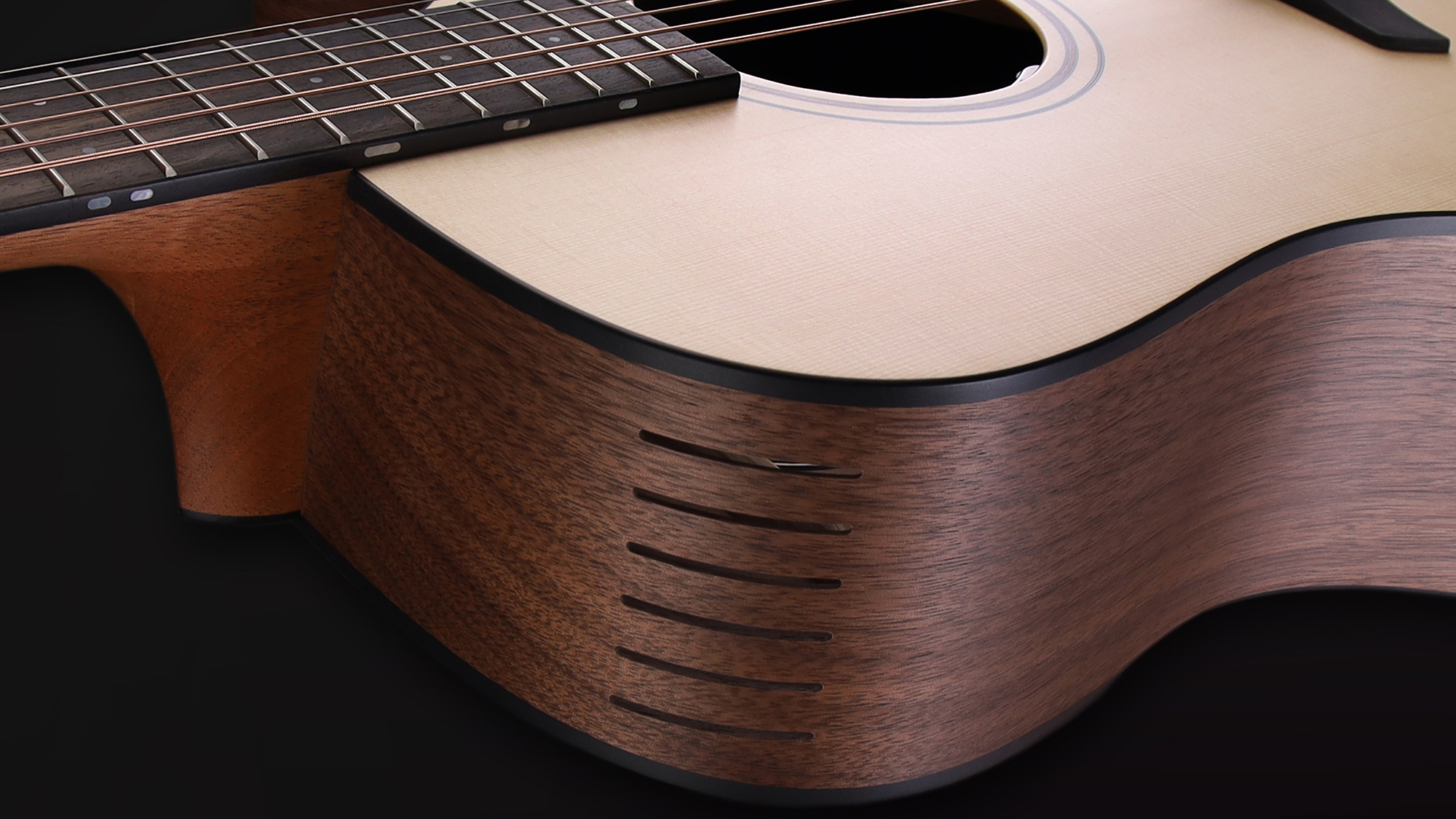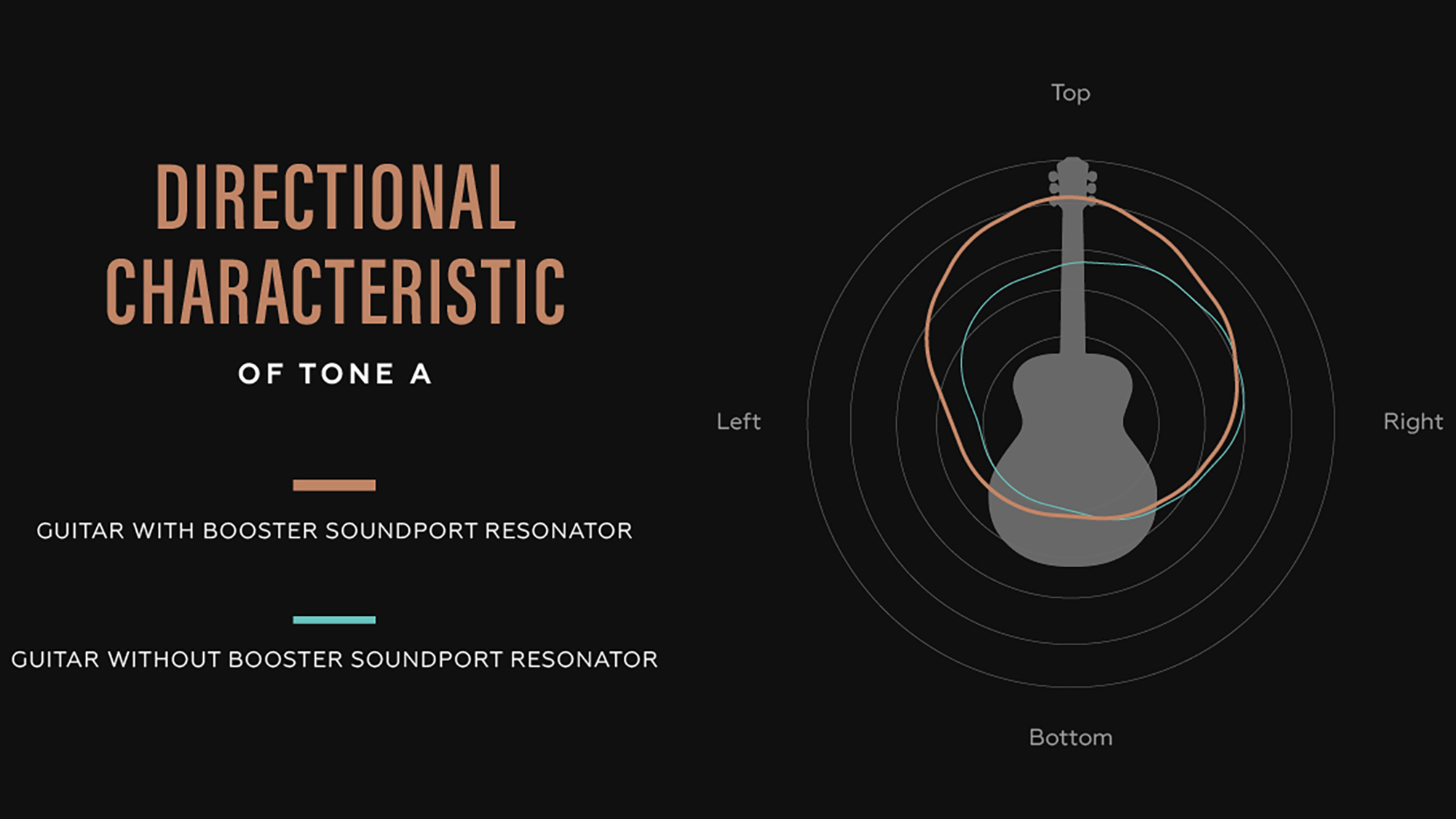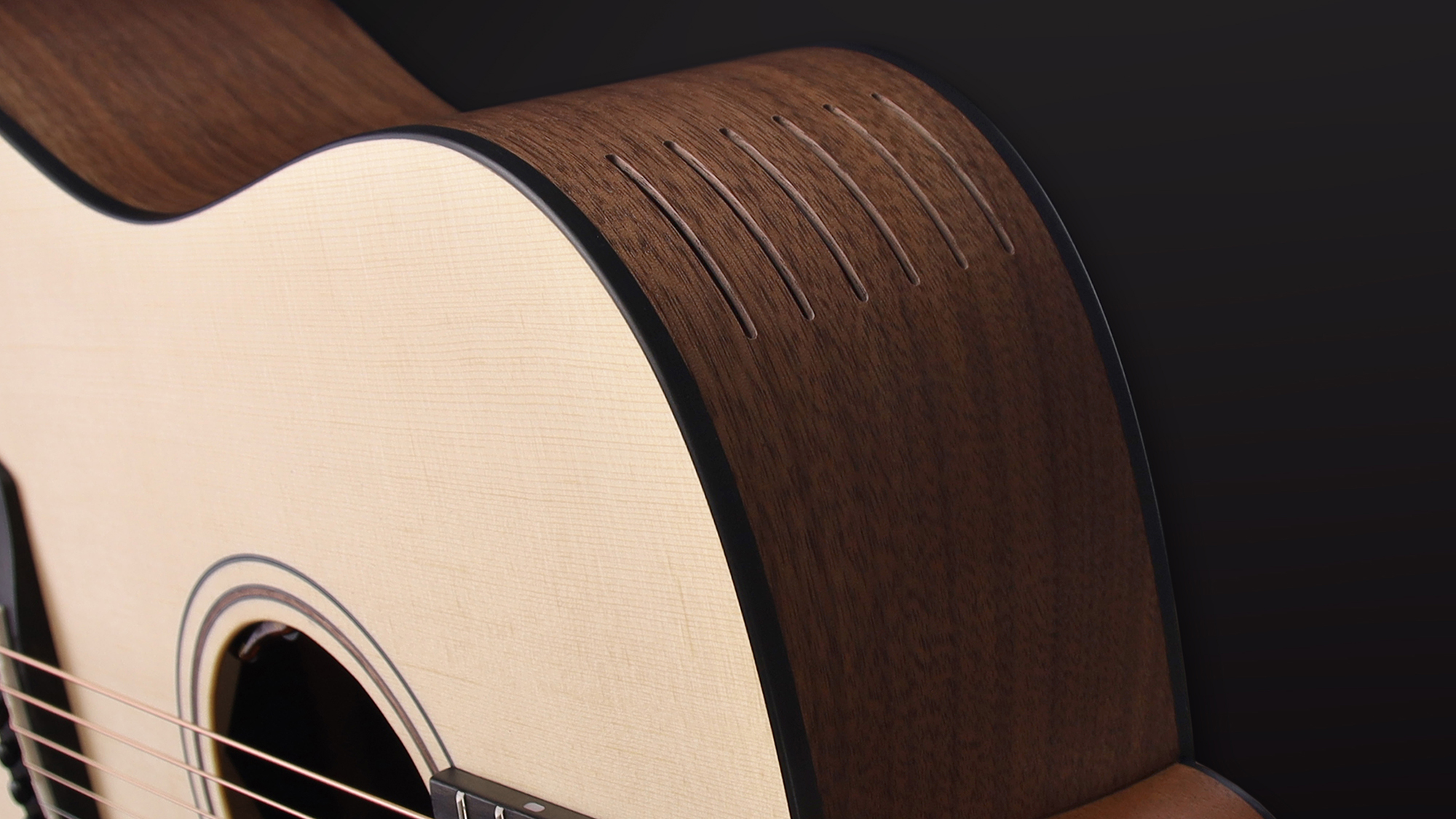“Clearer, louder, and more resonant sound”: Furch challenges Gibson, Ibanez and Taylor acoustic innovations with the Booster Soundport – which promises to change the way you experience the acoustic guitar

Furch is the latest company to attempt to overhaul the traditional acoustic guitar by debuting its new Booster Soundport design – a new way of acoustic construction that promises “clearer, louder and more resonant sound”.
Typically, an acoustic guitar features one central soundhole, positioned below the strings and between the bottom of the fretboard and the bridge. It is this soundhole whereby the string vibrations are amplified for the player and, in turn, those listening.
In recent years, the trend for new acoustic guitars has been to get creative with sound projection, and as a result we’ve seen a handful of guitar manufacturers introduce new ways to amplify natural acoustics.
Gibson’s Generation range, for example, offered top-mounted Player Port soundholes for better monitoring. Ibanez’s Advanced Acoustic family offered something similar, officially badging its own secondary soundhole as the A.I.R.port.
The list goes on: Taylor now neatly positioned a secondary soundhole in a slightly contoured cutaway on the bottom of some of its own acoustics.
Now, Furch has gotten in on the act with the Booster Soundport, which notably, is unlike any of the innovations that have come before it: while the other examples listed above all offer large holes routed into the guitar, this concept inside opts for six small incisions on the upper bout.

According to Furch, this particular approach optimizes projection and body resonance by reducing internal air pressure within the guitar’s body and by extension allowing the top soundboard to move more freely.
Get The Pick Newsletter
All the latest guitar news, interviews, lessons, reviews, deals and more, direct to your inbox!
“The Booster Soundport offers a new dimension to the playing experience,” says Furch CEO Petr Furch. “It’s not just about louder sound – it’s about achieving a more responsive, resonant instrument that truly comes to life in your hands.
“Whether you’re writing music, performing, or playing for yourself, the Booster Soundport ensures that the sound reaches your ears as clearly and richly as it does for your audience.”
The idea for the Booster Soundport originated from Furch’s observation that its dreadnought models (and dreadnoughts in general) had “untapped potential”, which it sought to unlock by experimenting with soundhole parameters.

Naturally, a bigger soundhole led to greater acoustic output and sonic improvements, but Furch was wary of rocking the boat too much, and straying too far from the conventional acoustic aesthetic.
As such, the Booster Soundport was pioneered, and was refined through rigorous testing in an anechoic chamber. Detailed analysis of the results – and of frequency band performance – confirmed to Furch that the new slit design did indeed improve the overall performance of its acoustics.
Specifically, there was a notable bump in the midrange frequencies, while the actual projection of the sound itself was observed to travel more towards the headstock, corresponding to the player’s head positioning.

“We've found that the Booster Soundport creates a more intimate connection between the player and their music by ensuring they hear every nuance clearer as they perform,” notes Furch’s Pavel Hoffmann.
“It brings that improved sound closer to your ears in a more accurate form,” Furch himself adds. “It’s ideal for anyone who wants to get the most out of their guitar, whether performing for an audience or playing for personal enjoyment.”
The Booster Soundport will first be rolled out to Furch’s Blue Performance range, which comprises two models.
The first, the DC-EW, offers an Engelmann spruce top with black walnut back and sides, while the DCEM offers African mahogany back and sides. Both come equipped with an LR Baggs EAS-VTC pickup.
Head over to Furch to find out more.

Matt is the GuitarWorld.com News Editor. He has a Masters in the guitar, a degree in history, and has spent the last 16 years playing everything from blues and jazz to indie and pop. When he’s not combining his passion for writing and music during his day job, Matt records for a number of UK-based bands and songwriters as a session musician.
“Among the most sought-after of all rhythm guitars… a power and projection unsurpassed by any other archtop”: Stromberg has made a long-awaited comeback, and we got our hands on its new Master 400 – a holy grail archtop with a price to match
The heaviest acoustic guitar ever made? Two budding builders craft an acoustic entirely from concrete because they “thought the idea was really funny”









